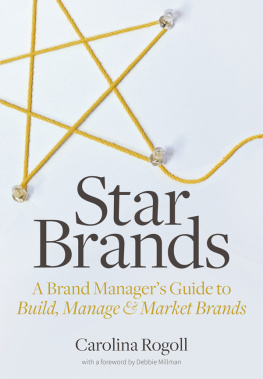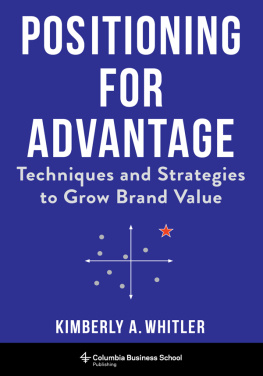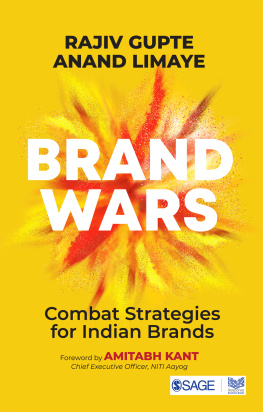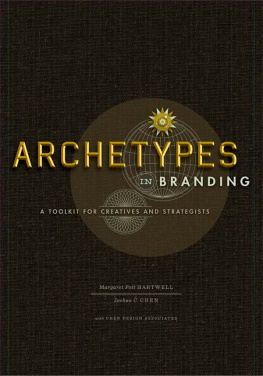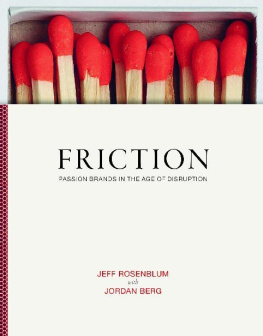

Copyright 2015 by Margaret Mark and Carol S.Pearson. All rights reserved. Except as permitted under the United States Copyright Act of 1976, no part of this publication may be reproduced or distributed in any form or by any means, or stored in a database or retrieval system, without the prior written permission of the publisher.
ISBN: 978-0-07-138118-5
MHID: 0-07-138118-X
The material in this eBook also appears in the print version of this title: ISBN: 978-0-07-136415-7, MHID: 0-07-136415-3.
eBook conversion by codeMantra
Version 2.0
All trademarks are trademarks of their respective owners. Rather than put a trademark symbol after every occurrence of a trademarked name, we use names in an editorial fashion only, and to the benefit of the trademark owner, with no intention of infringement of the trademark. Where such designations appear in this book, they have been printed with initial caps.
McGraw-Hill Education eBooks are available at special quantity discounts to use as premiums and sales promotions or for use in corporate training programs. To contact a representative, please visit the Contact Us page at www.mhprofessional.com.
TERMS OF USE
This is a copyrighted work and McGraw-Hill Education and its licensors reserve all rights in and to the work. Use of this work is subject to these terms. Except as permitted under the Copyright Act of 1976 and the right to store and retrieve one copy of the work, you may not decompile, disassemble, reverse engineer, reproduce, modify, create derivative works based upon, transmit, distribute, disseminate, sell, publish or sublicense the work or any part of it without McGraw-Hill Educations prior consent. You may use the work for your own noncommercial and personal use; any other use of the work is strictly prohibited. Your right to use the work may be terminated if you fail to comply with these terms.
THE WORK IS PROVIDED AS IS. McGRAW-HILL EDUCATION AND ITS LICENSORS MAKE NO GUARANTEES OR WARRANTIES AS TO THE ACCURACY, ADEQUACY OR COMPLETENESS OF OR RESULTS TO BE OBTAINED FROM USING THE WORK, INCLUDING ANY INFORMATION THAT CAN BE ACCESSED THROUGH THE WORK VIA HYPERLINK OR OTHERWISE, AND EXPRESSLY DISCLAIM ANY WARRANTY, EXPRESS OR IMPLIED, INCLUDING BUT NOT LIMITED TO IMPLIED WARRANTIES OF MERCHANTABILITY OR FITNESS FOR A PARTICULAR PURPOSE. McGraw-Hill Education and its licensors do not warrant or guarantee that the functions contained in the work will meet your requirements or that its operation will be uninterrupted or error free. Neither McGraw-Hill Education nor its licensors shall be liable to you or anyone else for any inaccuracy, error or omission, regardless of cause, in the work or for any damages resulting therefrom. McGraw-Hill Education has no responsibility for the content of any information accessed through the work. Under no circumstances shall McGraw-Hill Education and/or its licensors be liable for any indirect, incidental, special, punitive, consequential or similar damages that result from the use of or inability to use the work, even if any of them has been advised of the possibility of such damages. This limitation of liability shall apply to any claim or cause whatsoever whether such claim or cause arises in contract, tort or otherwise.
Contents
by Alex Kroll
Foreword
In October of 1987, I had to make a rush business trip to Toronto. After I landed at Pearson Airport, I ran for the first taxi in line. From the rear seat, I could see that the driver wore a tattered mackinaw and a wool cap with earflaps pulled down over wisps of straggly hair. In the mirror, I could see a crusty, days-old beard.
As he pulled away from the curb, he suddenly braked, turned to me, and spoke with urgency: Did you hear the news?
I sucked in some cold air. No, what?
Awful. The Hang Seng stock index went down nine percent this morning.
In that instant, I knew the long-awaited era of global communications had actually been born.
All the world, rich and poor, was fixated on the collapse of the financial markets in real time. And there was real worry in the cabbys eyes, which reflected fears around the world.
What was the story? No one seemed to understand why the markets were in free fall. What did it mean, this October collapse? Neither President Reagan, nor Margaret Thatcher, nor the secretaries of the treasury or exchequer, nor any other leader of reputation had stood up to tell us what the story was. So, in the absence of a new story, millions of people fell back on the last usable story: the stock market collapse of October 1929. And the quotes chased each other down and down.
Eventually, after scooping the cream out of millions of portfolios, the markets bottomed out, well above depression levels, because it wasnt actually 1929 all over again.
Today, as I write in another October, markets are roiling as never before. Brands are being born faster than ever before. The media are glutted with much more data, news, entertainment, and advertising than they were 13 years ago.
Without a good story for us to latch onto, to give meaning to the message, most of it slides by, vaguely seen or heard, but surely not absorbed.
We all love stories, and we need them. From fables to novels, from musicals to advertising, we instinctively crave stories which can provide the human context for forces that are often vast, ancient, and abstract. Stories are the best teachers.
This is a book about finding the right story. It provides a fresh framework for understanding how brands and companies gain and lose meaning, attention, value, and share of market in these hectic times.
In 30-odd years in the business of advertising and marketing, I have met no more original thinker or articulate researcher than Margaret Mark. I have had the good fortune to work with her for nearly two decades, during which I have watched her constantly tear up the hard sod of accepted wisdom and break new ground for the great benefit of her clients. Now, she has joined forces with Dr. Carol Pearson, a uniquely gifted scholar who has not only been delving deeply into archetypal studies for years, but has been applying her insights in a practical fashion as a consultant to major organizations. Together, they have fused a remarkable thesis that, in the end, is all about strengthening the valueeven the market valueof brands and companies.
I could not help but think of Margaret and Carol on the last Super Bowl Sunday, as a fresh phalanx of dot-coms paraded their million-dollar-per-half-minute commercials in front of the nations richest TV audience. Most of the commercials were witty, novel, and spectacular in effect. And most lacked anything close to meaning. Their millions were wasted.
This book illuminates the most ancient grooves in our mental architecture, which Carl Jung described as archetypes, and shows how they can be employed to bring meaning and profit to a brand. There is a nascent power here that, if understood correctly, can bring a rare vitality to a brand or a corporation.
But let me post the warning label up front. In my opinion, meaning is not something that can be grafted onto a product, particularly an inferior one. To attract and keep customers, meaning must be true to the intrinsic value of a brandthat is, what the product really is and does. Thus, the management of archetypes must begin long before an ad is begun. It starts with the development of a product or service that provides a real benefit.
Next page

